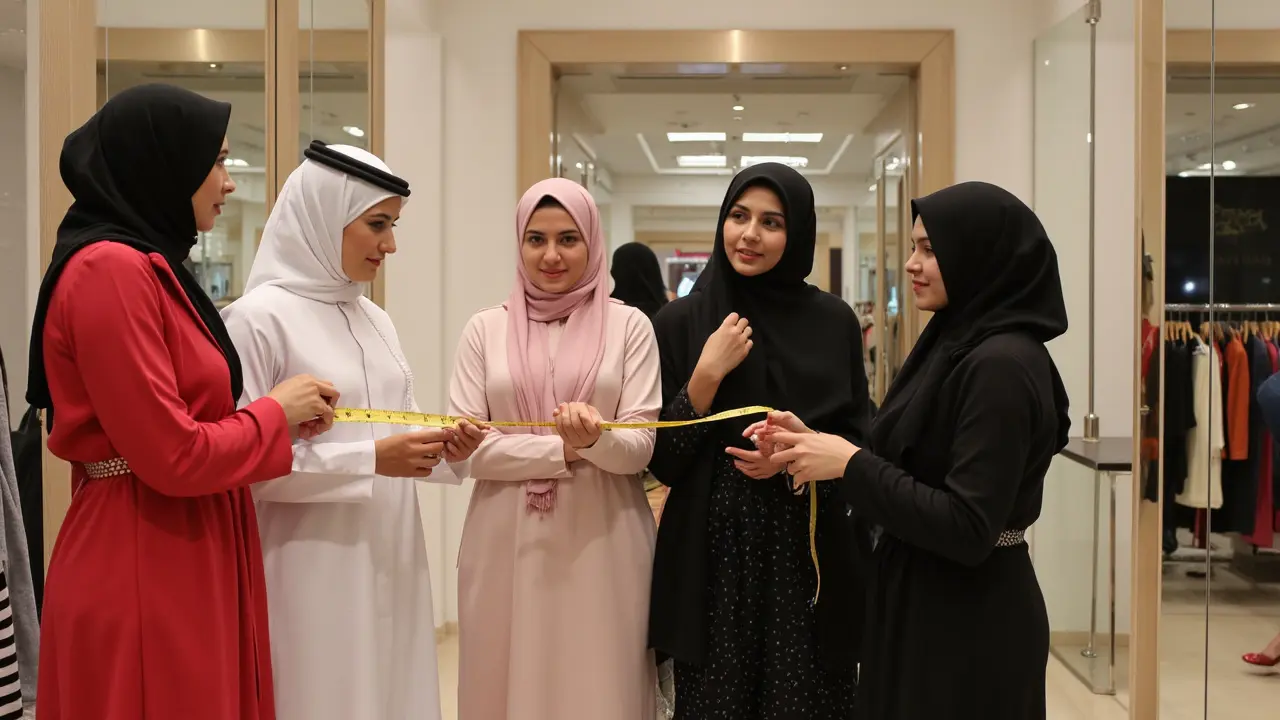Women's Sizing Explained: A Simple Guide for Models and Shoppers
If you’ve ever stared at a size chart and felt confused, you’re not alone. Whether you’re a model trying to understand agency requirements or a shopper hunting the perfect dress in Dubai, getting the basics of women’s sizing down can save time, money, and frustration.
Understanding the Basics
In the UAE, most brands use European (EU) sizes, but you’ll still see US and UK numbers on imported labels. The key is to focus on three measurements: bust, waist, and hips. Measure yourself with a soft tape, keep the tape level, and write the numbers down in centimeters. For example, a bust of 92 cm, waist 74 cm, and hips 100 cm typically translates to an EU 38‑40 range.
Model agencies often list size in terms of “sample size.” In Dubai, the standard sample size for runway work is an EU 34‑36, which corresponds to a US 2‑4. Plus‑size or curve models usually start at EU 42‑44 (US 12‑14) and go up from there. Knowing where you fall on the spectrum helps you target the right jobs or brands.
Conversion charts are handy, but they’re not perfect. A US 6 might be an EU 38 in one brand and an EU 36 in another. Always check the brand’s specific chart before you click ‘add to cart.’ If the store offers a size guide with exact measurements, use that instead of the generic number.
Tips for Finding the Right Fit
First, read the product description. Many Dubai retailers note if a piece runs small, true‑to‑size, or large. That little note can be the difference between a perfect fit and a return.
Second, look for the model’s measurements in the photo credits. When a dress is shown on a model with a 34‑size, you can gauge how the garment will look on your own body. Some sites even list the model’s height and bust‑waist‑hip numbers.
Third, use the “measure twice, buy once” rule. Take your own measurements, compare them to the brand’s chart, and add a centimeter or two if you’re between sizes. A snug fit often feels better than a garment that’s too loose.
Fourth, don’t ignore fabric. Stretchy materials like jersey or spandex can accommodate a range of sizes, while structured fabrics like denim or tailored suits need a more precise match.
Finally, remember that confidence matters. If a size feels good and looks great on you, it’s the right size, even if the number isn’t what you expected. In the modeling world, agencies value how you carry a garment just as much as the exact measurements.
By keeping these simple steps in mind, you’ll navigate women’s sizing with less guesswork. Whether you’re prepping for a shoot, buying a dress for a night out, or helping a friend find her perfect fit, a clear understanding of measurements and brand nuances makes the process smooth and stress‑free.
What Size Does a 135 lb Woman Wear? Clothing Fit Guide for Plus Size Models
Trying to figure out what clothing size fits a 135 lb woman can be confusing since brand sizing is all over the place. This guide breaks down what sizes you might expect, what affects fit besides weight, and how plus size models fit into the mix. You'll get real tips on measuring yourself, using size charts, and making sense of modern women's fashion sizing. Discover the perks and quirks of plus size clothing compared to standard lines. By the end, you'll know how to pick clothes that work for your shape, not just the scale.
